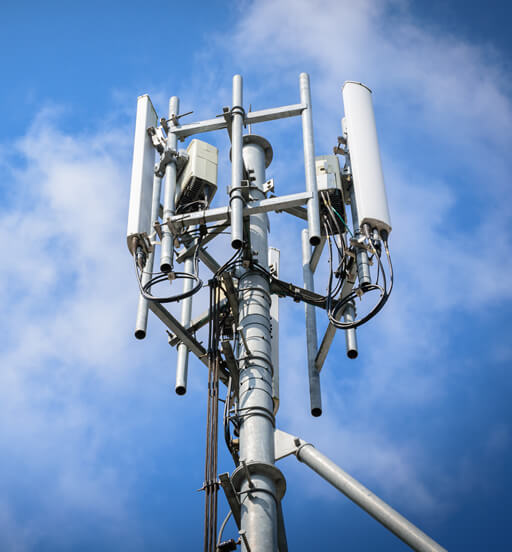Are usually safest distance from your 5G cell Tower system?

If you've ever walked through a town you might have noticed tiny 5G cell towers on street light poles. They look like little boxes however, they're actually transmitting wireless signals from mobile providers to your phone.
The smaller ones are being replaced by the larger built cell towers. Although they're not as visible but they can still create issues for users.
A FCC's Radiation Exposure Thresholds
The FCC's Radiation Exposure Thresholds establish the safe distance that an individual can be exposed to electromagnetic energy generated by wireless devices. The exposure limits are based on research which show that the energy of RF could be harmful to human health.
The rate of absorption called the specific absorption rate (SAR) is a measure of the amount of radiofrequency energy absorbed by tissue. It's typically 1.6 Watts per kilogram calculated over one kilogram of tissue.
Since 5g is able to transmit at higher frequencies and has the potential to create more energy on the skin as well as other body areas. what is a safe distance from a 5g cell tower can lead to many possible harms, such as an increase in the development of skin conditions like dermatitis, skin cancer and cataracts.

Due to the possible severe effects of 5g radiation, PSU has chosen to establish a general, localized power density limit of 4 mW/cm2 averaged across 1 centimeter, and never to exceed 30 minutes for the entire 5G spectrum at 3000 GHz. This localized limit is consistent with the peak SAR spatial-average of 1.6 W/kg averaged over 1 5 grams of body tissue, at 6 GHz.
The FCC's Maximum Exposure Thresholds
In the event that you've used cell phone, then you've probably realized that a safe range from the tower should be at least 400 meters. This is because the transmitting power of cell towers increases drastically the farther the tower is.
While https://egelundoakley.livejournal.com/profile sounds like something that's good, the reality is that those living close to towers may actually be more susceptible to health problems. For instance, a study conducted in 2014 in India found that residents living within 50 meters of cell towers had much more health problems than those who were distance from them.
This study showed that residents who moved to areas that were further from cell towers experienced their symptoms return to normal within a couple of days. Studies have also demonstrated that exposure to extreme levels of radiofrequency electromagnetic fields (EMFs) can cause brain tumors, cancer and other health issues.
This is due to the fact that RF radiation, which is used in wireless communication, can penetrate the human body's exterior layer, called the skin. It is crucial to know because the skin acts as a protective barrier against injuries caused by mechanical forces, infections from pathogenic microorganisms, as well as the entry of harmful substances. Additionally, it is the biggest organ of the human body, and is responsible for keeping the integrity of other organs.
The FCC's Minimum Exposure Thresholds
The FCC's Minimum Exposition Thresholds are based upon numerous assumptions that are not supported by scientific research. They include the incorrect belief that exposures to RF radiation is safe due to the limited penetration into the body (i.e., tissue heating).
The assumption also ignores the deeper penetration of the ELF parts of the modulated RF signal and the effects on the body of short bursts from pulsed RF waves. These theories are not compatible with current understanding of the biological consequences of RF radiation. Therefore, they should not be relied upon for health-protection exposure standards.
In Get more info there is the fact that both ICNIRP and FCC limit the maximum limits of exposure to peak local SARs based on the peak frequency of absorption (psSAR) which is not a reliable dosimetric instrument to determine the degree of radiation exposure. In particular, psSAR is inaccurate when frequencies exceed 6 GHz. Furthermore, psSAR has not been tested for RF radiation with co-exposure to other environmental agents , such as sunlight. Interactions of RF radiation with other environmental agents could cause synergistic or antagonistic effects. This would result in an increased risk of negative health adverse effects. For example, exposure to RF radiation and sunlight could cause an increase in the incidence of developing skin cancer, as well as aggravate other skin diseases such as acne.
